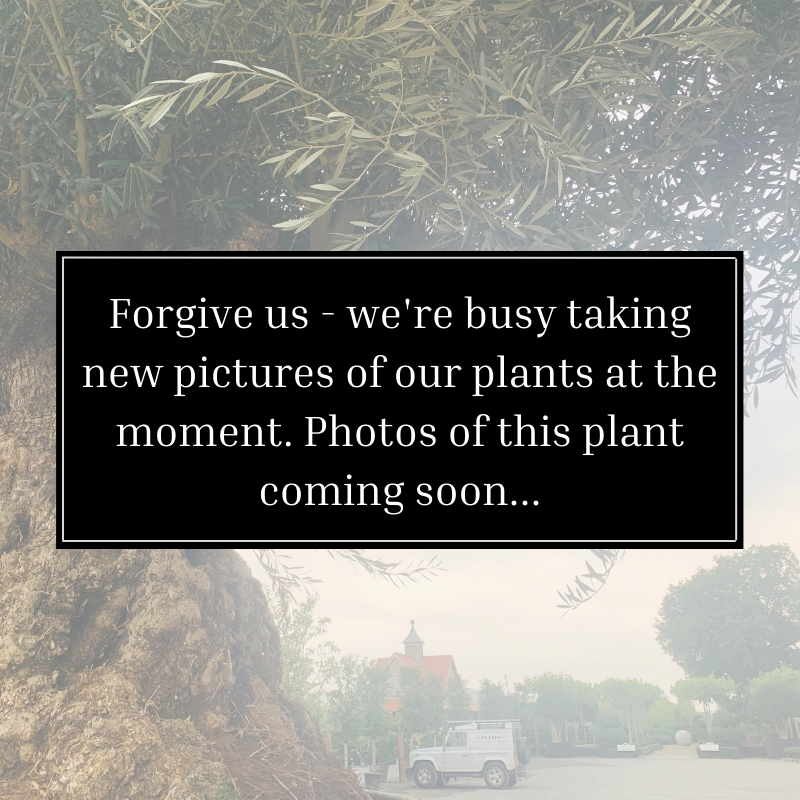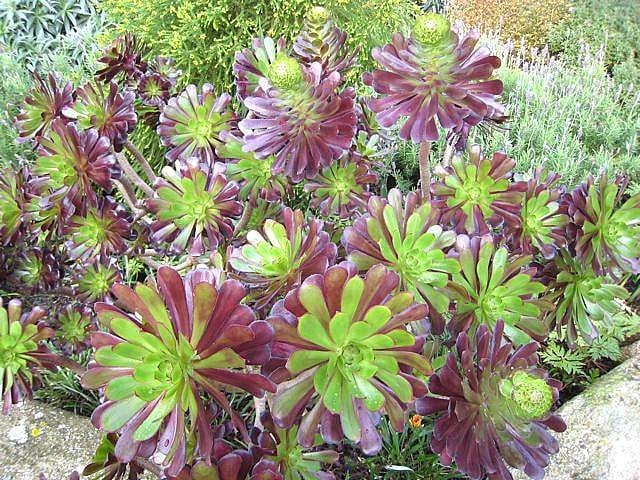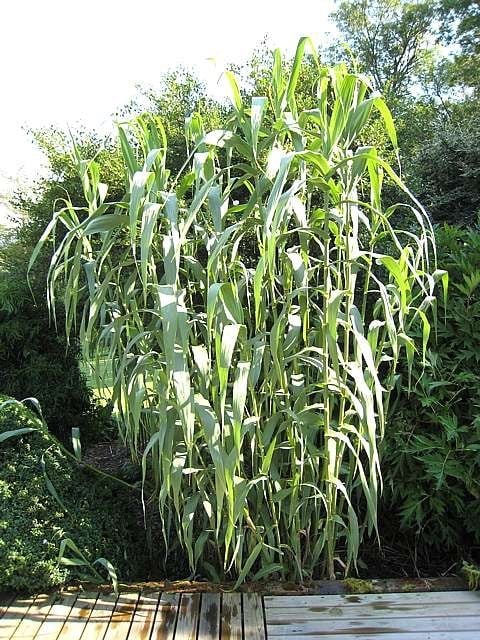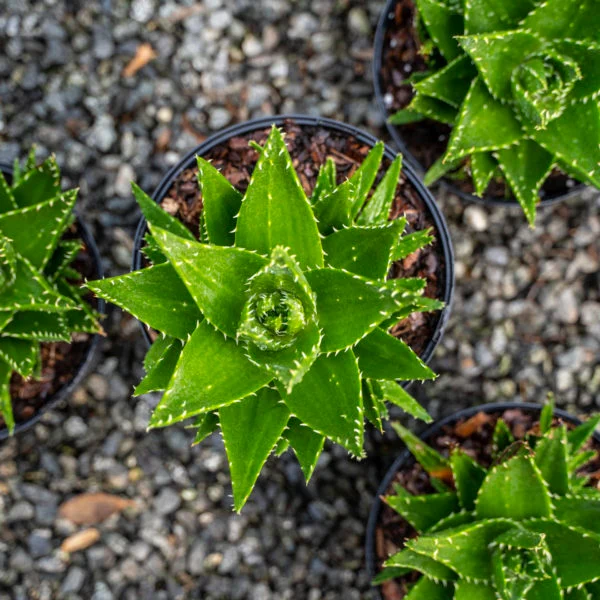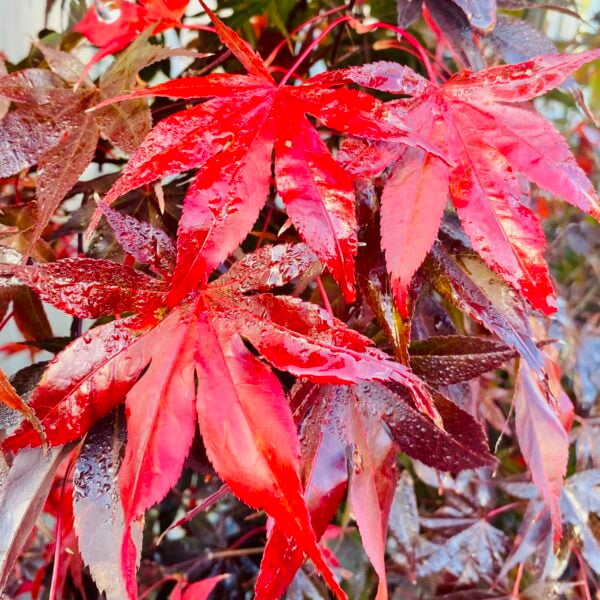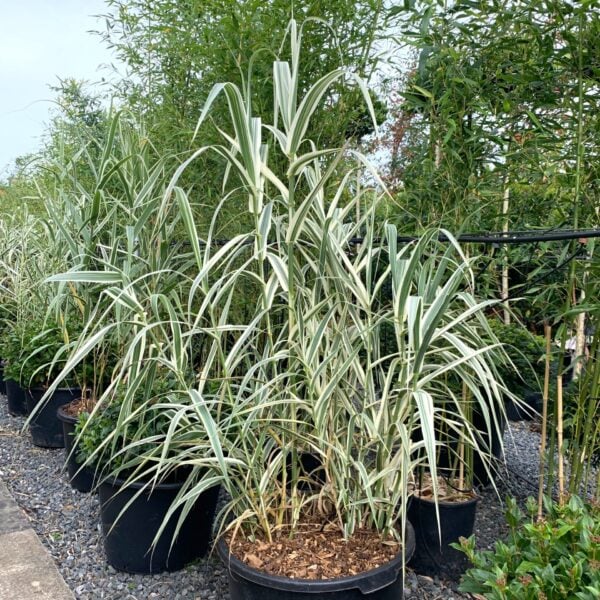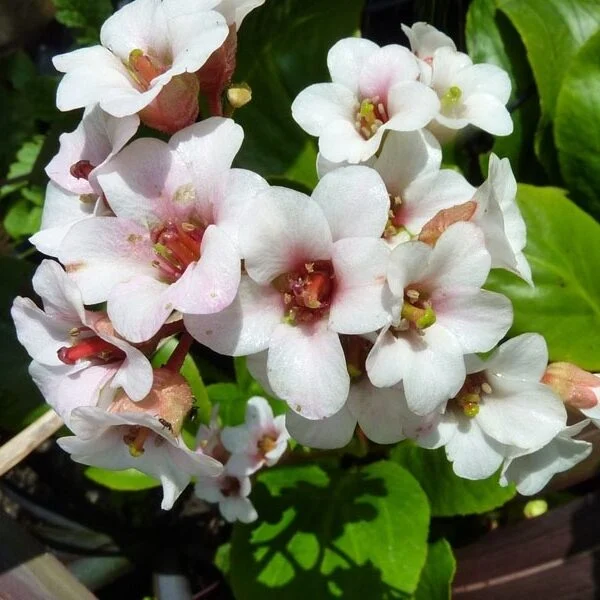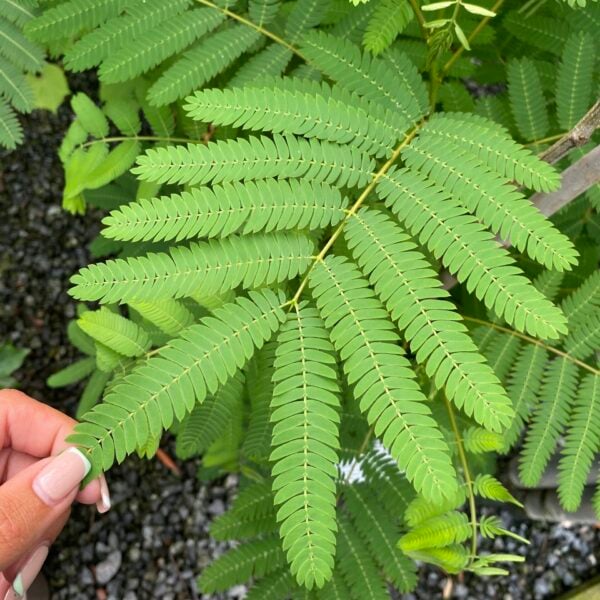Brahea Armata (Blue Hesper Palm)
All the way from Baja California, one of the bluest of all palms. Stout, slow growing, exotic and blue. AND with the largest flowers in the world. Please contact us for stock availability and sizes.

Hardiness level Red
This is tough, easy and reliable and is used in Mediterranean climate landscaping all over the world. We've put a red label on it because it's not exactly well known in Britain and is therefore untried. It will certainly take frost but also needs warmth and light and space. A London garden or a built up area near the coast come to mind as distinct possibilities. Or a big greenhouse/conservatory.
Many years ago a customer of ours bought an enormous specimen from a nurseryman in Nice and shipped it back to to his garden in the U.K. because the nurseryman told him it was hardy. Maybe in Nice but not necessarily in West Sussex - said I. This was mighty expensive and a very fine specimen so I made the suggestion that he bought a greenhouse to cover it in the winter, had it removed every spring and re-erected in the autumn. He duly did this but many years ago confessed to me that when I'd originally made the suggestion he thought it was the most stupid thing anyone had ever said to him. Fortunately, he was a wealthy man who did things well and loved his garden and the greenhouse erection routine is still done every year and he undoubtedly has the most beautiful Blue Hesper Palm growing outside in England. So there's an idea.
In a hot climate with plenty of water they might reach 20 ft tall after 30 years but they're generally slow growing. Plenty of light and space in any reasonably well drained soil.
The flowers are remarkable. Correctly, they're referred to as inflorescences as they don't conform with the conventional idea of a flower. Huge long fluffy things that stick out from the centre of the tree and then bend towards the ground as they fail to support their own weight. They're said to be the biggest of all florescences of any plant in the world.
Grown from seed.
N.B. When clipping several plants with the same tool, have a bucket containing a 5% bleach solution and swish your blades around for 30 seconds between plants to sterilise them. This will help avoid the chance of cross contamination of disease.
As with all woody plants, plant high, exposing as much of the taper at the base of the trunk as possible. Allowing soil to accumulate round the base of a tree can be fatal. Keep very well watered when first planted.
Additional Information |
|
|---|---|
| Soil Type | |
| Light | |
| Plant Type | |
| Continent of Origin | |
| Specialist Plants | |
| Features | |
| Tree Size | |
| Situation | |
| Flower Colour | |
| Hardiness | |




